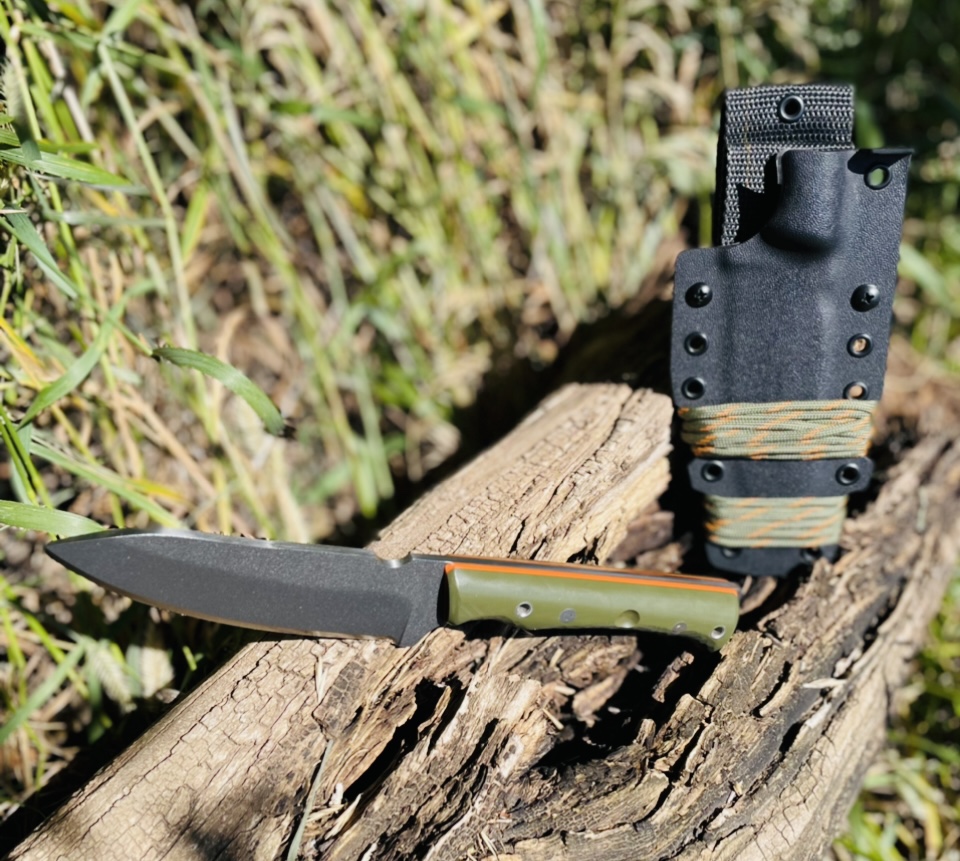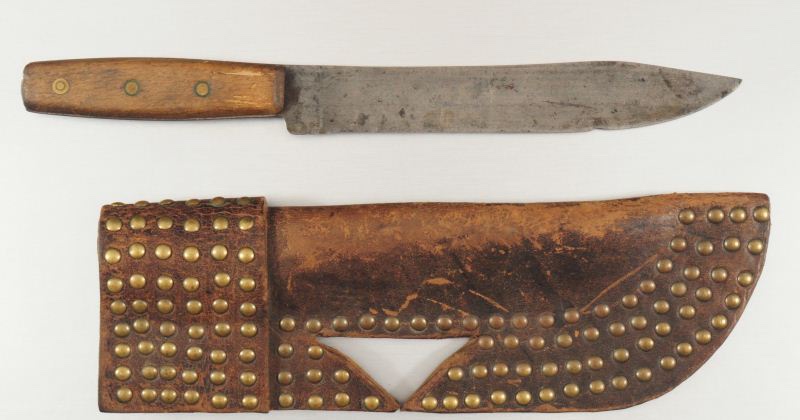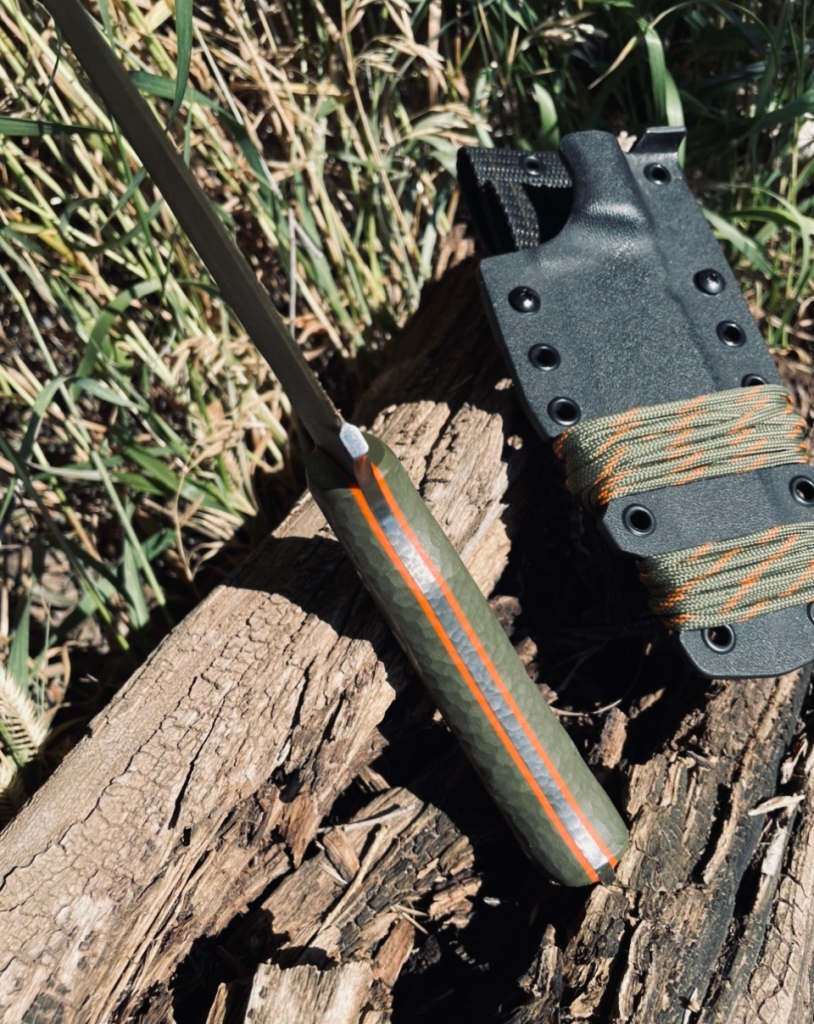

I’m excited to announce I’ll be producing my own knife, built upon specifications of my own and borrowing from historical examples of proven designs.
It’s a well known fact how important a good belt knife is, and after years of trial and error and searching for a knife that I could settle on I decided to design my own. There are a lot of great knives out there, but in my research it always seemed like I was having to make a compromise, and often I found myself torn between different knives, wishing I could just combine the best qualities of them all.
I wanted to build the kind of knife that I could give to a brother or good friend if they were going into harms way or if I knew they would need a knife to survive. I wanted it to be as reliable and useful as possible.

I drew inspiration from some of my own mentors thoughts on knives as well as historical information on what’s been used for hundreds of years by those living off the land. I wanted to take these ideas, integrate them into the survival systems I’ve been taught, as well as my own experiences, and use modern materials and manufacturing techniques to create a tool that any mountain man, hunter, scout or bush soldier would have been proud to own.

The knife is a bit of a hybrid of different designs. It combines the continuous curve of the English and French trade knives with the distinct hump found on frontier butcher knives. These were two of the most commonly carried belt knives during the exploration and expansion westward in the 17-1800’s and still remain useful to this day.

Curved blades provide more cutting surface per blade length compared to a straight edge, and are superior at cutting compared to a straight edge. Whether creating feather sticks or skinning game, a curved blade is the classic choice for a reason.
When field dressing game, the curved butcher’s hump on the spine of the knife works like a ski to keep the tip from puncturing organs and spoiling the meat. For skinning, the 5” curved blade quickly and easily separates the hide.
The blade is a full tang to give it the most strength possible. The knife is made from 5/32” thick 52100 high carbon steel and I use my own heat treating and tempering process. This produces a very tough grain structure in the steel which helps the knife hold an edge for a long time and resist edge damage. 52100 is commonly referred to as “ball bearing steel” because of it’s use in ball bearings. It is twice as tough as 1095, a common knife steel used in other “survival” knives. I use a 2/3 saber grind which makes a blade thick enough for chopping and batoning, yet still thin enough to slice, skin and carve good. The tip of the blade is nearly in line with the center of the knife, making for a good spear point as well as being very comfortable to drill with.

Fire making is a core skill I teach at the Fieldcraft Course, and I wanted the Bush Hunter to be as useful as possible for making fire. Tempered to a hardness of 61 RC (I confirm this on each knife by testing in my Rockwell hardness tester), this knife excels as a steel striker. Besides using the blade spine as a steel striker, it also has a 1/2” notch for scraping tinder or a ferrocerrium rod. While it’s certainly possible to scrape with a straight spine, the half circle notch provides more surface area, producing more shavings per scrape and works similar to a lamp reflector to focus these shavings into your tinder. This may not seem important until you are trying to get cold and wet tinder to light and seeing the difference between a straight scraper is really pretty amazing. The rest of the spine is sharpened to a nice 90 degree edge as well, giving the end user many options to use.

I’ve also put a 1/2” bow drill socket in the center of the handle (I do this when the order is placed so I know which side to place the socket on, depending on your handing) and the sheath comes with 15’ of #36 bank line. These can both be some of the hardest materials to create off the landscape for a bow drill set, so having both available on a belt knife is a great advantage should you ever need to.
I’ve also put a lot of thought into the handle as well. The handle is just as important as the blade, being the interface between the blade and the user. With ergonomic contours, carving and chopping should both be equally comfortable. The curved integral guard allows for a comfortable close grip when carving detail is needed, such as carving notches, and keeps the user’s hand from riding up onto the blade when stabbing. On the other end, the “tail hook” near the pommel should keep the knife from slipping out of your hand while chopping, similar to an axe or machete handle.

The handle also includes an exposed pommel for scraping as well as chiseling. Being slightly concave it will keep a mallet from slipping off and hitting your hand if chiseling is necessary. The sharp 90 degree edge will work as a scraper, further preserving the sharp spine of the knife.
The scales themselves start as 3/8” thick pieces of either G10, Micarta or Dymalux, you choose what you want when you order. All three of these materials are highly weather resistant and durable while providing an exceptional grip texture. The scales are secured with Blade Pro epoxy as well as two stainless Loveless fasteners and two stainless lanyard tubes. I dimple the scales and tang to improve adhesion as well; needless to say this handle isn’t moving.
The knife comes with the Badlands Drifter Sheath System, an extremely useful kydex sheath with multiple features designed for going into the bush. While I appreciate a nice leather sheath, it can get soaked with water and lose it’s grip on your knife. Kydex is completely water proof and provides consistent tension on the knife.

Ordering Information
I’m caught back up and I’m comfortable taking orders again.
The price for the knife and sheath is $275 plus shipping. Currently lead time is about 10 months after payment is received. To order a custom knife please check out this post on handle materials available and email me the following:
- Your name and mailing address
- Right or left handed?
- Handle material (G10, Dymalux, or Micarta)
- Handle color(s)
- Sheath color
- Sheath belt loop color

Looks like a great design with a lot of utility and thought put into it! That 5/32nds really is a good thickness. Has plenty of strength, cuts nice and keeps the weight down as well. I have some 3/16 CMP3V for a design I’ve been playing with, but I’ve been thinking lately that it’s a little too thick for what I’m looking for.
LikeLiked by 1 person
Thank you! I’m really liking it compared to my 3/16” knives as well. The saber grind really is great too, I like it way more than the scandi’s I’m used to on the thicker knives. 3V is really awesome, that’s another steel I want to play with eventually. I’ve been reading “Knife engineering” by Dr. Larrin Thomas and from what I gather a 3/16” think piece of 3V could easily handle a full flat grind. There just isn’t enough hours in the day to try all the different variations haha. Let me know how it goes!
LikeLike
Is current lead time still 5 months?
LikeLike
Yes sir
LikeLike
I’ve had my Badlands Hunter for some time now, I’ve used it for a lot of fire prep; making shavings and small sticks out of big sticks (we heat with wood). The Ferro rod notch works great with a 1/2″ rod, directing the sparks in a narrow path. I’ve cut up some beef roasts and the blade shape has worked great for that.
Unfortunately I didn’t get to break down an elk with it this year, I plan to remedy that next year.
I still haven’t need to touch up the blade, it is stil arm hair shaving sharp.
LikeLiked by 1 person
Thanks buddy, I’m glad you’re getting some good use out of it! I appreciate the feedback!
LikeLike